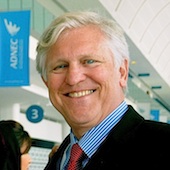During the first half of the 21st Century, our global civilization will be tested. Will we muster the will and the ingenuity to make a great transition from the patterns of the past, which have resulted in trans-boundary pollution and ecological destruction on a global scale? Will we find the moral courage and the entrepreneurial spirit to create a green economy and attack the ancient problems of poverty, inequality, and the lack of economic opportunity. Will we see the positive power inherent in an inclusive perspective of our common humanity and spare no effort to end injustice, intolerance, and oppression? The path of sustainable development will be illuminated by these three concepts–environmental, economic, and social– blended together in a new synergy for a new millennium.
Many people say they do not understand what sustainable development really means. It is not a phrase they use around the dinner table and since it admittedly sounds rather clunky, they may think it is something they can ignore as irrelevant to them or to the society in which they live. Some people have heard about the concept, but believe that it is only ungrounded idealism, too ethereal for the tough world in which we live. Still others believe that sustainable development represents a veiled, yet sweeping agenda, driven by unseen powers or by advocates of global governance in the United Nations and elsewhere.
The concept of sustainable development emerged from a formidable array of scientific findings, which gathered steam during the 1970s as more and more evidence showed the converging ecological, economic, and social impacts of adverse trends that crossed borders with impunity. The emergence of a new international agenda in the early 1980s generated new policies and required new leadership. Carried initially by non-governmental organizations who realized that pollution, pandemics, finances, and development practices increasingly swept past boundaries and through all segments of society, the new movement created new organizations like the World Resources Institute and WorldWatch and brought its policy proposals to major political organizations like the National Governors Association and to local communities in the form of Globescope Conferences. Seeing the momentum being created by a global citizens movement, fortified by the Brundtland Commission headed by the Prime Minister of Norway, the United Nations responded to national leaders and accepted the challenge. The UN General Assembly called for a global meeting to pull these ideas together in a coherent form. The historic Earth Summit of 1992 was born. Once assembled in Rio de Janeiro, it attracted the largest number of Heads of State and Government that the world had ever seen. Selected as UN Secretary General was the same visionary leader who had successfully led the UN Stockholm Conference on the Environment of 1972, Maurice Strong.



